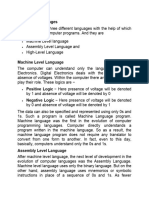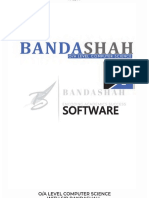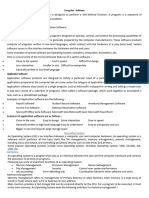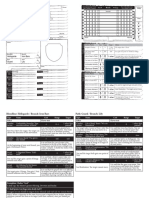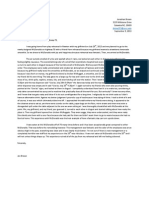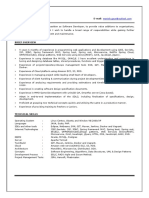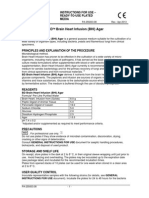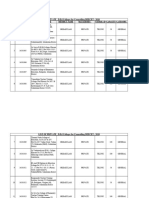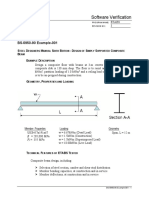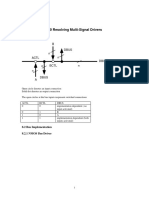0% found this document useful (0 votes)
32 views5 pagesComputer Software
Software is the logical component of a computer system, guiding hardware on task performance and is classified into system software, software development tools, and application software. System software includes operating systems, utility programs, and language translators, each serving specific functions and managing various computer resources. Application software is designed for specific tasks, such as word processing or data management, while software development tools aid in creating other software.
Uploaded by
adimachai17Copyright
© © All Rights Reserved
We take content rights seriously. If you suspect this is your content, claim it here.
Available Formats
Download as PDF, TXT or read online on Scribd
0% found this document useful (0 votes)
32 views5 pagesComputer Software
Software is the logical component of a computer system, guiding hardware on task performance and is classified into system software, software development tools, and application software. System software includes operating systems, utility programs, and language translators, each serving specific functions and managing various computer resources. Application software is designed for specific tasks, such as word processing or data management, while software development tools aid in creating other software.
Uploaded by
adimachai17Copyright
© © All Rights Reserved
We take content rights seriously. If you suspect this is your content, claim it here.
Available Formats
Download as PDF, TXT or read online on Scribd
/ 5



